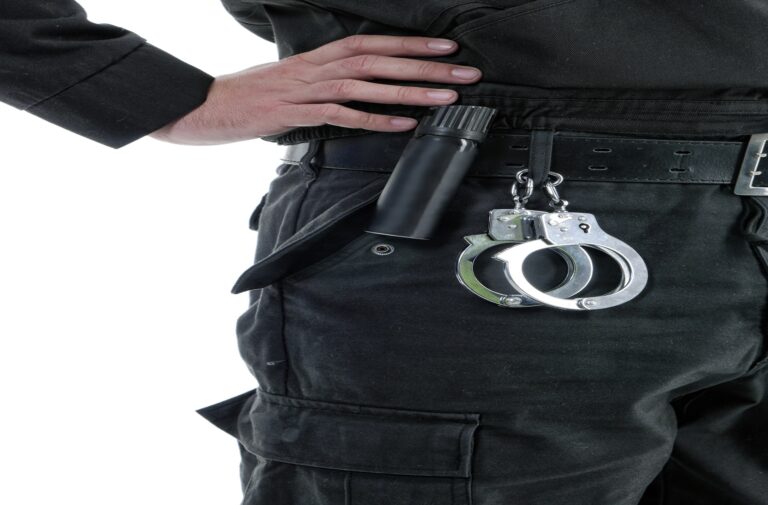Non-Contact Apprehensions: A Growing Standard in Ontario Retail Security
Last Updated on Aug 12, 2025
Retail theft continues to be a major challenge in Ontario, especially in high-traffic areas like the GTA, Ottawa, and other urban centres. Security guards and loss prevention professionals (LPPs) are under increasing pressure to reduce theft while ensuring safety for everyone involved.
One approach gaining momentum in Ontario’s retail sector is the non-contact apprehension — a safer, low-liability alternative to traditional hands-on arrests.
This article explains what non-contact apprehensions are, why Ontario retailers are adopting them, and how they’re shaping the role of security guards in the province.
What Is a Non-Contact Apprehension?
A non-contact apprehension is when a suspected shoplifter is detained using only verbal commands, without any physical contact from the guard or LPP.
Instead of blocking the suspect’s path or applying handcuffs, the guard might say:
“You are under arrest for theft under the Criminal Code of Canada. Please follow me to the security office so we can wait for the police.”
The guard maintains a safe reactionary distance, uses clear verbal instructions, and relies on communication and observation skills until police arrive.
Why Ontario Retailers Are Moving Toward Non-Contact Policies
✅ Increased Safety for Staff and the Public
Physical arrests can lead to injuries for guards, suspects, or bystanders. This often results in WSIB claims, civil lawsuits, or negative publicity. Non-contact methods greatly reduce these risks.
✅ Lower Legal Liability
Under Section 494 (Citizen’s Arrest) and Section 25 (Use of Force) of the Criminal Code, security guards in Ontario have limited authority to use force. What’s considered “reasonable” is interpreted very narrowly by the courts. Using a hands-off approach helps guards avoid crossing that line.
✅ Protecting Public Image
In Ontario’s retail spaces — from big box stores to malls — there’s always a high chance an incident will be recorded on a smartphone. Even a lawful physical arrest can appear aggressive on video, harming a retailer’s brand.
✅ Training Limitations
Many retail security guards in Ontario complete only the mandatory 40-hour Basic Security Training and may not receive advanced use-of-force instruction. Non-contact strategies emphasize verbal control, which aligns with the training most guards have.
How to Perform a Non-Contact Apprehension in Ontario
1. Identify and Inform
Clearly state that the individual is under arrest under the Criminal Code.
Example:
“I’m with store security. You are under arrest for theft. Please follow me.”
2. Give Clear, Legal Directions
Explain where they need to go and what will happen next. Let them know that refusing could lead to additional charges like obstruction.
3. Maintain a Reactionary Gap
Keep approximately two metres (6 feet) between you and the suspect for safety.
4. Observe and Communicate
Watch body language closely. Use calm, assertive communication to keep control and defuse potential escalation.
5. Wait for Police
Escort the suspect to a secure area (if they comply) and contact local police. Do not physically restrain or block exits if they choose to leave.
Challenges in Ontario Retail Security
❌ Higher Risk of Escape – Without physical control, suspects may walk away.
❌ Limited Response Options – A hands-off policy leaves fewer tools for handling violent behaviour.
❌ Heavy Reliance on Verbal Skills – Requires strong conflict management training.
❌ Potential Repeat Offenders – Career shoplifters may feel emboldened if they know there’s no physical intervention.
How Ontario Retailers Are Adapting
✔ Enhanced Communication Training
Security companies are offering in-depth courses in conflict de-escalation, tactical communication, and situational awareness.
✔ Leveraging Technology
Ontario retailers are installing HD CCTV, AI-driven analytics, and facial recognition to track and identify repeat offenders without physical confrontation.
✔ Stronger Police Partnerships
Many stores are working with local police services to improve response times and ensure charges are pursued when theft occurs.
Final Thoughts
The shift toward non-contact apprehensions is reshaping Ontario’s retail security landscape. While it has its drawbacks — especially with determined offenders — it reduces injuries, legal risks, and reputational damage.
For Ontario security guards, the message is clear: verbal communication, de-escalation, and observation skills are now essential tools of the trade. With proper training and support, non-contact methods can keep both staff and customers safe while still protecting assets.
Ontario Security Guard Training Programs
- Conflict De-escalation
- Tactical Communication
- Legal Powers of Arrest in Ontario
- Retail Loss Prevention Best Practices
Stay trained. Stay compliant. Stay safe.



